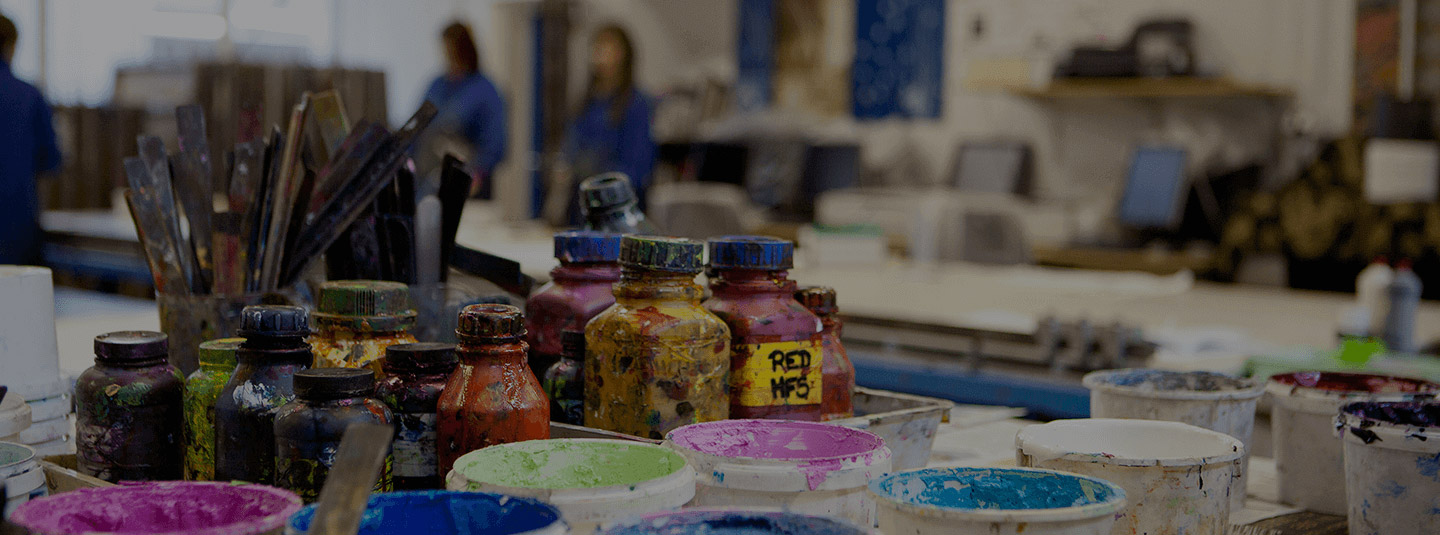
Donald Wilkinson: A Profile
The painter Donald Wilkinson is sitting by the window in his north Cumbrian living room. The window looks out into the big skies over Hadrian’s Wall and the borderland, over a constant landscape of shifting moods. These are the skies that have called to the Keswick born artist all his life, and still refuse to let him go.
‘It’s true,’ he says. ‘I was always being called back home. Even when I was studying in London, on the Cromwell Road right in the middle of everything, I would come back up north for my ideas.’
Donald, the UoC alumnus celebrated for his evocative landscapes of fells, lakes, sea and sky, is talking about his days at the Royal College of Art in Kensington. He was a young graduate from the Carlisle School of Art when he slipped quietly into London on the cusp of the sixties.
It was a time when everything that was to explode into a fabled decade of British cultural expression was fizzing around him. But somehow, with memories of friendly and happy days on the Brampton Road campus still fresh in his mind, he didn’t totally feel part of it.
‘Now I think about that, I think I was a bit naïve – that I couldn’t find my ideas there in London. I was probably a bit homesick,’ he says. ‘But there were ideas up here, and I needed to refresh my imagination, so I’d come back home when I could. I would do watercolours. I had moved into printmaking, the drawings I did for my prints were done up here in the north on my holidays.’
Donald, born in 1937, had pedigree for life as an artist. His father John, who signed himself Wilk, had achieved some renown for his paintings, watercolours and fond caricatures of country life. When Donald told his parents he wanted to go to art college in Carlisle, his mother Mary was sympathetic too.
‘They said: “We don’t mind what you specialise in as long as you can earn a living at it.”’
In 1953 Donald arrived at the college’s newly acquired Homeacres building in Stanwix to take his intermediate diploma and thrived.
‘It was a pretty small community. There would have been about 100 students, pretty well all in there at Homeacres.
He describes the scene. His painting room was downstairs. ‘Another room was the dress department – fashion, another was the weaving department, a textile printing area, a little canteen at the back with about five dining tables and the principal’s office - it was a very friendly atmosphere.
‘Harold Shelton was the principal in my time, he built the college up. We were some of the first students in Homeacres. We knew that some of the local councillors were aghast that this country house had been given to art students to work in! There was a scout commissioner who lived across the road, Mr Matthews, who we were told was “keeping an eye on us.”
‘We did more than just paint, we had music appreciation, there was some ballet instruction. There was a life-drawing studio, illustration - we used to do pottery in Tullie House.’
By the time it was over Donald had taken his National Diploma and won a place at the Royal College of Art, but it was 1957 and he had to do his National Service first. He joined the Royal National Dental Corps. ‘I learned to mix fillings, take x-rays, make the plaster casts for dentures – and hold people down when they were having their teeth out!’
Four days after leaving the services he began his classes in London. All around him the cream of young British artists were flexing their muscles. It was competitive and tough.
‘I didn’t find the three years very easy, I was trying to find my feet, I mean that creatively too. Though I was coping with it, and one met interesting people.’
‘My work wasn’t consistent then,’ he says. ‘I was trying to find something I could get to grips with.’
That was when he began asking permission to make trips home.
‘I drew all the time, but I wasn’t sure about doing landscapes, just then urban was all the rage. At Carlisle I had avoided landscape. I think it really began when I once came back and spent some time at a mountaineering hut at Honister, drawing. Since then my work has been landscape.’
His tutor at RCA, the distinguished artist and printmaker Julian Trevelyan, helped to put the pieces together.
‘He said I should go for a landscape prize. To my surprise I won it. I was awarded the Lloyd Scholarship.’
The rest is successful history - he went into teaching, moving up to Chesterfield, but kept developing his strengths. In 1965 he had married Shirley, an infant teacher he’d met on one of his frequent train trips back north. He hooked up with a London gallery happy to sell his ever more accomplished prints and coloured etchings, the awards started to flow in, and with them the publicity, the interviews, the interest, the sales. By 1979 he worked out that he could make enough from his own printing to give up teaching and move back to the north for good.
Donald had arrived back from a trip to Scotland just before our interview, his studio in the garden is festooned with the results. He’s still hard at work and earlier this year had a fine exhibition at the Words By The Water literary festival in his home town of Keswick. Everything he has achieved, he says, was bolstered by those years on Brampton Road, drawing, drawing, drawing.
‘I’ve always been the same,’ he says. ‘If I’m not drawing, I’m thinking about drawing.'
by Tony Randall
Posted on Friday 20 June 2014
